New Ford Figo review, test drive
The new has replaced the old. But does the second-generation Figo impress from behind the wheel? We find out.
Published on Sep 24, 2015 12:12:00 PM
70,122 Views
Follow us on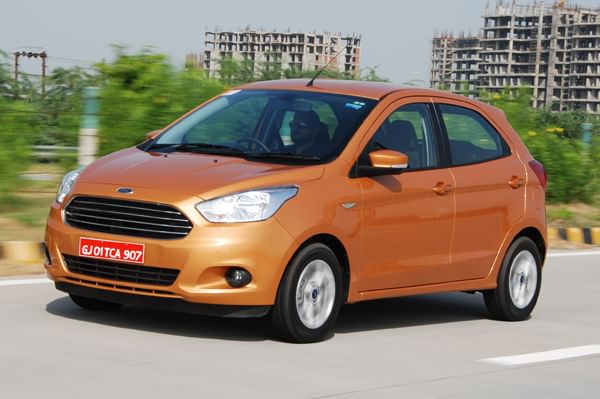
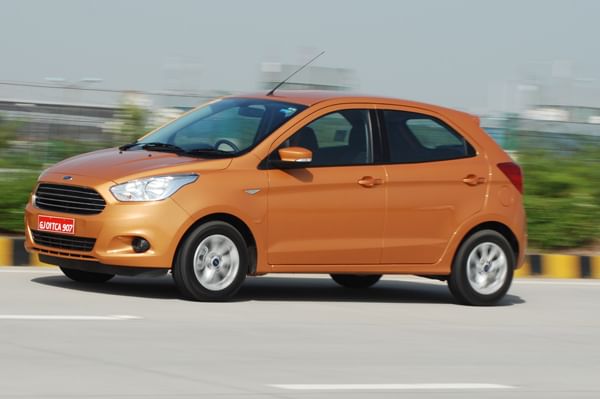

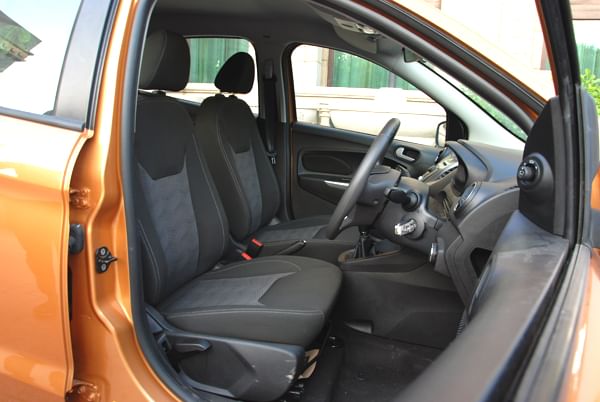
What is it?
It’s been just about a month since Ford launched the Figo Aspire compact sedan and it’s been quick on its feet by now launching its sibling – the new second-generation Figo hatchback. The American carmaker claims these two cars mark the turning point of its future in India, or so it hopes. When we drove the Aspire, we came away impressed and it’s time for the smaller brother to prove itself.
In the flesh, there’s nothing to tell the Figo hatchback from the Figo Aspire compact sedan until the
B-pillar. It’s got the same Aston Martin-esque front grille, peeled-back headlamps and general crisp, clean looks. However, the hatchback has the nicer form from the rear doors on. The roofline flows quite naturally into the tail and there’s a good proportion to the design though the small 14-inch wheels are somewhat of a spoiler here too. Still, styling at the rear is quite neat with smart wrap-around tail-lamps and good definition to the tail gate. What’s also good is that the tail opens to reveal a sizeable luggage bay. The rear seat back also folds forward should you need more space. Unfortunately, the loading lip is a bit high and the boot floor is low so you’ll have to lift heavy luggage more than you’d like.

Swing open the driver’s door and it is the cabin’s all-black theme that will tell you are sitting in the Figo hatchback and not the Aspire – the design and layout of the dashboard are identical and very Ford. Things you’ll notice will include a rather boring instrument cluster, a busy-looking centre console and elegant knurled dials for the climate control system. Top Titanium+ cars get a digital (albeit old-school) read-out atop the dash for Ford’s SYNC infotainment system. Lower trim cars lose the screen but instead feature Ford’s clever MyDock phone holder. It’s designed to hold phones of all sizes snugly and is a useful feature for those who frequently use their phone’s GPS systems.
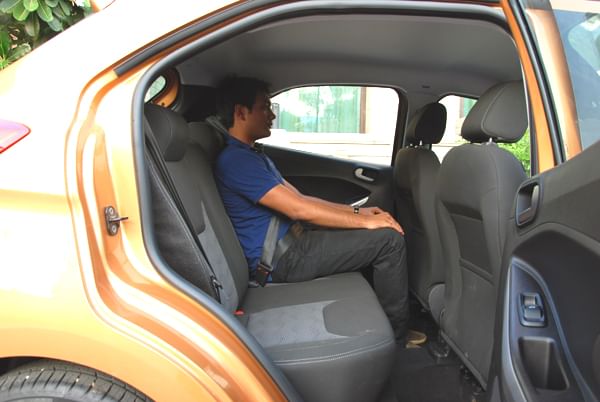
Quality and fit-finish in the cabin is acceptable but no more. You can tell Ford has cut costs and there’s a noticeable inconsistency between the textures of the plastics used in the cabin. The switchgear though, works with a tactile and positive feel. What also works well are the small touches in terms of storage space and practicality. There’s the nook ahead of the gearlever (to stow away odds and ends) and the concealed pockets between the side of the dash and doors (useful for keeping your valuables in). Each front door can hold two bottles and the glovebox is decent-sized as well. Rear occupants won’t be as happy with storage spaces as there’s only a sole bottleholder for use.
For entertainment, there’s the par-for-the-segment Bluetooth, USB and aux connectivity for music, and steering-mounted controls. On the top Titanium+ trim, Ford provides a programmable key (MyKey) which allows the driver to set the top speed and maximum audio volume. As mentioned, top trim cars get Ford’s Sync system. Usability-wise it's fine and even has the ability to connect to a few apps. However, the main highlight of the system is its ability to automatically use your phone’s network to alert emergency services in case of an accident. Talking safety, top Titanium + cars also boast a class-best six airbags! All but the base versions (driver’s airbag only) get two airbags as standard which is commendable. Higher variants get ABS and EBD.
What is it like to drive?
The Figo will be available with three engine-gearbox combinations. There’s a 1.2 petrol with a five-speed manual, a 1.5 diesel with a five speed manual and a 1.5 petrol with a six-speed dual clutch automatic. We’ve sampled the diesel and petrol automatic so far and have come away quite impressed.
The diesel first. Well, unsurprisingly, it’s the same 1.5 diesel engine as on the Aspire compact sedan (the updated version of the EcoSport’s motor), but the good news is it hasn’t been dulled down for use on the hatchback. That means power is a solid 98.9bhp! As a result performance feels better than lower-powered rivals from the moment you set off. Responses are good right from idle with a gentle surge speeding things up at about 1,500rpm. Thereon there’s an even spread of power right until 4,000rpm. The engine’s not quick revving per se but remains responsive throughout, even in fifth gear. However, gearshifts are a touch notchy and aren’t suited to quick shifts. Driving in town we also noted the diesel car’s clutch to be well-weighted if springy in action.
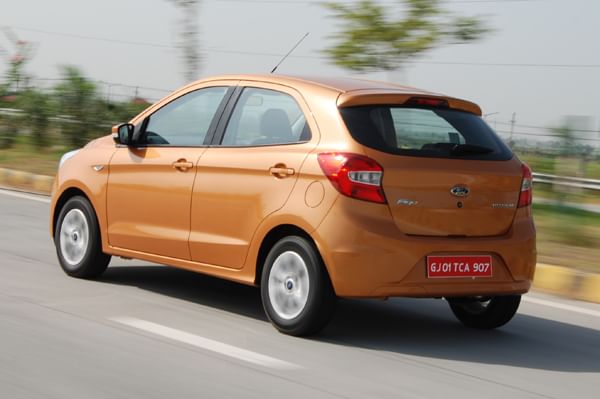
Time to shift attention to the petrol automatic Figo. Again, like the Aspire this version uses a 1.5-litre petrol engine and a six-speed dual clutch automatic transmission. The engine’s peak power of 109bhp helps make this the most powerful of the automatic hatchbacks in India. In town, the engine’s good bottom end responses help this version of the Figo build speed smartly. However, in slow-moving city traffic, you can feel the clutch engage so shifts aren’t super smooth. But once on the go, the gearbox settles into its rhythm and responds well to changes in throttle position. At light loads, the gearbox shifts at about 2,200rpm but drive hard and it will hold to about 6,300rpm. The gearbox has a Sport mode too. It won’t hold gear beyond 6,300rpm but lift off the throttle and the gearbox does well to downshift and bring revs right into the heart of the powerband. Those driving on hilly roads will particularly like the engine braking effect in this mode. Drivers also have the option to shift gears manually in Sport. However, there’s no Tiptronic here, only small ‘+/-’ buttons on the gear lever for this and that’s a bit of a downer. Performance on the whole is good and you won’t have much trouble getting to and maintaining three-digit speed over long distances.
This being a Ford, we had to scrutinise it thoroughly for ride and handling. The results are largely positive. There is some un-Ford-like slack at the steering but ride and handling in general is good by class standards. The steering has a decent weight to it, low-speed ride is absorbent enough and high- speed body movements are well contained. Ford seems to have addressed the bottoming-out issue that plagued the old Figo too. In fact, ground clearance is a class-best 174mm.
What also deserves a mention here is the high level of refinement. Good insulation means road, wind and engine noise are rarely a bother. The engines are quiet in their own right though you can feel a buzz on the steering of diesel engine-equipped Figos.
Should I buy one?
Copyright (c) Autocar India. All rights reserved.


Comments
Member Login
Personal Details
No comments yet. Be the first to comment.